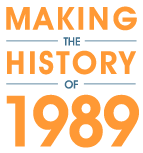Primary Sources
Browse Items
Samizdat, Air Pollution
Pollution from the Black Triangle was a tremendous source of water and air pollution in Eastern Europe, but it was not the only source. Heating systems that relied on coal power, and cars using leaded gas and lacking catalytic converters added to this immense problem, which especially plagued larger cities, including Prague.
Initially, the Czechoslovak Communist….
Samizdat, Houses of Culture and Entertainment
During the Cold War era an interesting public space called "the house of culture" (or sometimes "the palace of culture") proliferated throughout the East Bloc. Sometimes they existed as free-standing buildings, sometimes as parts of factory complexes, and very often they were buildings within the massive housing settlements were millions of Eastern Europeans awoke and retired to rest each day.….
Samizdat, Tuzex
Tuzex, short for Tuzemský export (or domestic export), was a set of special stores in Communist Czechoslovakia. The Communist Party established Tuzex in 1957, in order to draw hard currency from citizens' pockets into the coffers of the state. Hard currency, including American dollars and West German marks, was convertible currency linked to the international gold….
Samizdat, Five Year Plan
In 1986 the Czechoslovak Communist Central Committee approved its Eighth Five Year Plan since 1948, which stayed in effect, with modifications, until 1990. The plan built upon the East Bloc practices of following the Soviet command-economy model and emphasizing heavy industry over consumer goods. For example, the plan called for industrial output to grow 15.8% for the five year period (roughly….
Samizdat, Consumer Goods
Czechoslovaks watched the unfolding of perestroika [restructuring] in the Soviet Union and its slow introduction into their own economy with great interest, although there were obstacles to doing so. While the Czechoslovak Communist Party was ready to start experimenting with economic perestroika, it maintained reservations about glasnost [openness or publicity]. It suppressed reports about….
